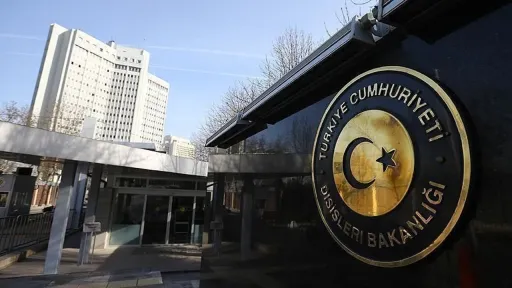Archaeologists working in the ancient city of Colossae, located in Türkiye’s Aegean region, have uncovered 60 tombs dating back approximately 2,200 years.
Though similar tomb types have been found elsewhere in Anatolia, experts say it is rare to find such a large number constructed side by side in such a confined area.
“In Colossae, we discovered what appears to be the largest necropolis in Anatolia featuring rock-cut, trough-shaped tombs. After removing the surface soil, we identified around 65 tombs, of which we excavated 60.
Along with skeletal fragments, we encountered significant archaeological data,” archaeologist Baris Yener told Anadolu.
He emphasised that people in antiquity chose travertine formations as burial grounds to make efficient use of the land.
“The people of the ancient period made remarkable use of the geological and topographical features of the site. They sought to use the travertine rock formations efficiently, since agriculture — particularly grain production — was practiced at the time. To preserve arable land, they designated the rocky travertine areas as burial grounds.”
Potential for faith tourism
The ancient city also holds significant potential for faith tourism. According to Yener, the research findings indicate that the ancient inhabitants of this region placed great importance on protective belief systems.
“The findings reveal how much the people of Colossae valued magic, talismans, and objects believed to have protective powers. In the tombs, we uncovered numerous amulets, charms, and stones thought to possess healing qualities,” he said.
The artifacts offer insight into the community’s spiritual desire for protection and the deep connection between funerary rituals were intertwined with everyday religious practices.
Among the artifacts identified as grave goods are terracotta and glass bottles, oil lamps believed to have been placed to illuminate the darkness both in daily life and in the journey after death, as well as coins and personal belongings such as sandals.
Filling a historical gap
Yener noted that the findings obtained from the excavations in Colossae are significant enough to fill a chronological gap in the region’s history, explaining that they now possess a continuous stream of information covering the period from the Late Chalcolithic Age up to the Turkification of Honaz in 1206.
Once one of the most prominent cities of the Persian period, Colossae also held an important place in the history of Christianity during the eras of Roman and Byzantine rule
However, as neighboring ancient cities such as Hierapolis and Laodicea were founded nearby, Colossae gradually lost its prominence and suffered severe damage in an earthquake that occurred in the 1st century CE.
Rebuilt under the name Chonae around 692 CE, the city was ultimately abandoned following another devastating earthquake in 787 CE.
Following three years of surface surveys, excavations began under the direction of archaeologist Baris Yener from Pamukkale University, as part of the Ministry of Culture and Tourism’s Heritage for the Future Project.
The site lies within the modern-day borders of Denizli province, at the foothills of Mount Honaz.
Known as a key trade center from the 6th century BCE, Colossae, which was particularly renowned for its wool and textile production — continues to reveal new insights into its past through ongoing archaeological work.
























